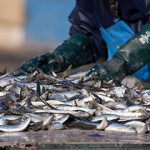Chinese shrimp industry hoping autumn holiday season provides some respite from sector-wide challenges

China’s shrimp industry has pinned its waning hopes at a revival this year on the country’s autumn holiday season, which traditionally results in a boost in nationwide seafood sales.
This year’s mid-autumn festival in China overlaps with the country’s annual National Day holiday, leading to a longer holiday season than usual.
Any boost in sales would be welcome news to firms like Guolian Aquatic, which has blamed falling shrimp prices for the CNY 186.5 million (USD 26.1 million, EUR 24.2 million) loss the company recorded in the first half of 2023, compared to a profit of CNY 32.8 million (USD 4.59 million, EUR 4.26 million) in the same period last year.
“The mid-autumn festival will be the best indicator of the situation,” said Pablo Resnik, the head of business development at seafood trading firm Roda International. “It will be five to seven days [after the holiday] before … we will know if the consumption was as expected or not.
Chinese shrimp firms are facing a supply glut, labor issues, high inflation, and weak demand, along with a struggling processing sector.
“It’s very clear there is oversupply,” Resnik confirmed. “It can be seen from the import volumes.”
For domestic producers, foreign competition is starting to bite, according to Peter Fleming, the CEO at Singapore-based LIM Shrimp. He said the supply surplus is the biggest issue facing the country’s shrimp sector, saying it’s currently “not profitable to produce in China” due to oversupply from Ecuador, which has resulted in lower prices globally.
Kevin Fitzsimmons, an aquaculture specialist and professor of environmental science at the University of Arizona, said he believes Asian shrimp producers are “acutely aware of Ecuador taking market share and are having lots of discussions on how to compete.”
“The drive to increase intensive farming is being questioned when Ecuador seems to be succeeding with semi-intensive production,” he told SeafoodSource. “But I think the consensus is that Ecuador is a bit of a special case for several reasons. For one, the industry is very mature there. They have long established farms with well-trained and experienced technicians and farm operators. They are acutely aware of carrying capacity, quality broodstocks and [post-larvae], high-quality feeds, and maintaining water quality ...
Photo courtesy of chinahbzyg/Shutterstock





Share